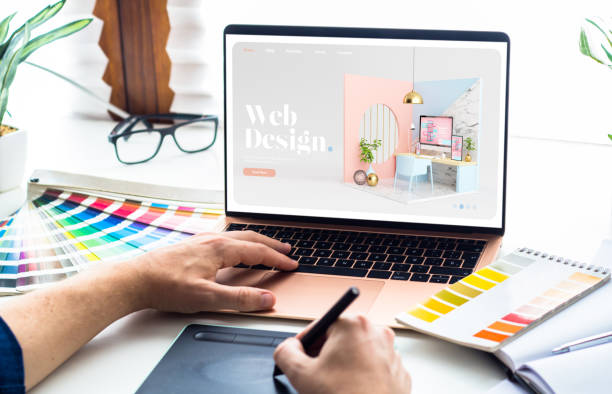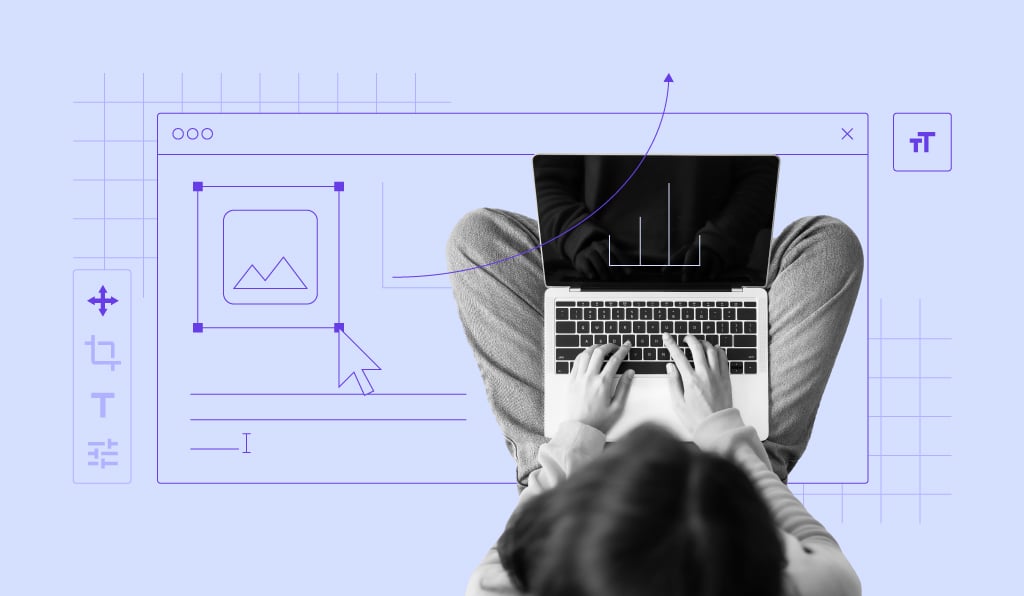Why Website Design is Crucial for Your Business Growth and Success
The Ultimate Overview to Modern Website Layout Trends
In the ever-evolving electronic landscape, modern site design trends play a crucial duty in forming customer experience and interaction. From the rise of minimal style principles that prioritize simplicity to the impact of vibrant typography in specifying brand name identification, each aspect adds to a cohesive online visibility.
Minimalist Style Principles
Minimal layout concepts emphasize the idea that less is extra, advocating for simpleness and performance in aesthetic communication. This method strips away unneeded elements, concentrating instead on crucial elements that communicate the intended message properly. By focusing on clarity, minimalist style enhances customer experience, allowing site visitors to browse web sites easily.
Core tenets of minimal layout consist of making use of adequate white area, which develops a feeling of equilibrium and organization. This unfavorable room not only directs the visitor's focus to crucial elements but also promotes a relaxing visual atmosphere. Additionally, a minimal color combination is often used, using soft shades or monochromatic plans to keep aesthetic communication and avoid overwhelming the individual.
Typography plays a critical duty in minimal style, where legible typefaces are selected for their simplicity and performance in connecting web content. Graphics and pictures are used sparingly, making sure that they serve an objective instead of sidetrack from the overall message. Inevitably, minimalist layout concepts cultivate a concentrated atmosphere that motivates customers to involve with the content, boosting the general performance of modern website style. This fad mirrors an expanding recognition for thoughtful, user-centric appearances in electronic spaces.
Bold Typography Choices
Embracing strong typography selections has actually become a specifying feature of modern internet site design, as it successfully catches focus and conveys strong messaging. Designers are significantly utilizing typography not merely as a practical aspect however as a key aesthetic element that boosts the general visual and customer experience.

In addition, the association of vibrant typography with minimalist design concepts permits for striking contrasts, boosting readability while preserving aesthetic allure. Using whitespace around vibrant text better emphasizes its value, making certain that the message reverberates with the target market.
As digital landscapes become more competitive, leveraging vibrant typography makes it possible for brands to separate themselves and leave a long lasting perception. The cautious selection of fonts and their application can stimulate emotions, develop tone, and drive activity, making strong typography a crucial tool in contemporary website style. Inevitably, it is a powerful means to boost storytelling and make sure that crucial messages are not just seen but likewise really felt.
Responsive and Mobile-first Style
Mobile-first and receptive style has actually emerged as a critical principle in modern-day website advancement, mirroring the boosting dependence on smart phones for accessing on-line web content. As user actions changes in the direction of mobile browsing, developers should prioritize developing experiences that adapt effortlessly throughout numerous screen sizes and resolutions.
A receptive layout makes certain that a website immediately readjusts its design, pictures, and performance based on the device being used. Mobile-first design supporters for creating internet sites initially for smaller screens, consequently scaling up to bigger screens.
Applying mobile-first and responsive principles not just accommodates customer preferences yet additionally straightens with search engine optimization (SEO) methods. Major search engines, like Google, focus on mobile-friendly web sites in their positions, making it imperative for companies to adopt these style techniques. In an affordable electronic landscape, welcoming mobile-first and responsive design is not just a choice; it is important for guaranteeing access and engagement with a varied target market.
Involving Microinteractions
Microinteractions play an essential role in boosting individual interaction and total web site experience, especially in the context of receptive and mobile-first design. These subtle design aspects provide immediate comments to customers, making interactions much more user-friendly and delightful. Examples consist of switch animations, notice informs, and loading signs, which not only overview customers yet additionally develop a sense of link with the interface.
Including interesting microinteractions can substantially enhance use by minimizing cognitive tons. When individuals get visual or auditory responses upon executing actions, such as clicking a switch or sending a kind, they feel much more certain in their selections. This fosters a smoother navigating experience, ultimately enhancing customer retention.

As web site design trends remain to develop, the importance of microinteractions can not be overemphasized. They serve as the refined yet effective touchpoints that transform ordinary communications right into extraordinary experiences, thereby raising the general performance of modern-day internet style.
Sustainable Internet Design Practices
Lasting web style methods are coming to be progressively essential as the digital landscape grows and ecological concerns rise. Designers and designers are acknowledging their obligation to produce sites that not only offer customer requirements however likewise decrease environmental effect. This approach encompasses several vital techniques.
Firstly, optimizing energy consumption is extremely important. look at these guys Sites should be created to load quickly and effectively, which decreases web server power use and improves individual experience. have a peek at these guys Strategies such as image compression, minimizing HTTP demands, and making use of modern coding practices contribute dramatically to this goal.
Secondly, selecting green hosting companies is crucial - website design. Many hosting firms are now powered by renewable resource sources, making it possible for internet sites to operate in a more sustainable way. This selection mirrors a commitment to decreasing carbon impacts
In addition, adopting a minimalist style can enhance sustainability. Fewer elements on a page cause much less information transfer, which not only quickens loading times however additionally saves sources.
Last but not least, promoting digital ease of access makes sure that websites get to a wider audience without unnecessary bloat, straightening individual experience with environmental obligation. By integrating these lasting techniques, internet designers can add favorably to both customer involvement and the world's wellness.
Final Thought
In his comment is here recap, contemporary site design trends emphasize the assimilation of minimal principles, bold typography, and receptive style to boost customer experience. Involving microinteractions add to remarkable interactions, while sustainable practices promote for environmentally mindful advancement. Collectively, these aspects not just raise aesthetic appeal however additionally enhance capability, ensuring that web sites are both straightforward and aesthetically striking. Taking on these patterns is necessary for creating impactful digital experiences that reverberate with customers in a significantly competitive on-line landscape.
In the ever-evolving digital landscape, contemporary website design patterns play an essential duty in forming customer experience and engagement. By focusing on clearness, minimalist style improves user experience, enabling site visitors to browse internet sites effortlessly.
Eventually, minimalist layout principles cultivate a concentrated setting that motivates customers to involve with the material, boosting the overall efficiency of modern-day site design.Microinteractions play an essential duty in boosting customer engagement and overall web site experience, especially in the context of mobile-first and responsive layout.In summary, modern website design patterns emphasize the combination of minimal concepts, strong typography, and receptive layout to boost user experience.